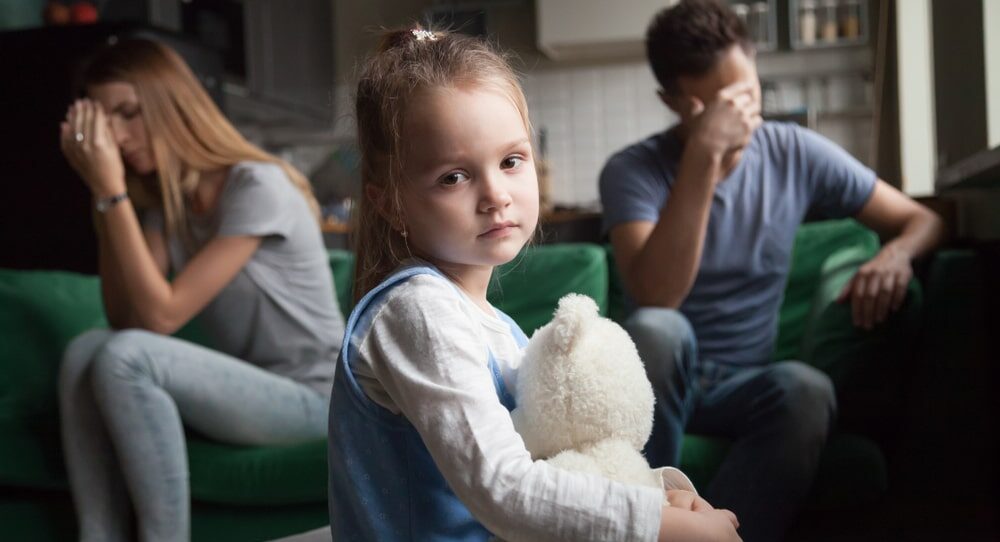
When can a child decide Which Parent to Live with in Alberta?
A divorce has the potential to be an extremely traumatic event in a child’s life. When parents choose to live separately, their child’s life changes significantly and creates a lot of uncertainty, especially when it comes to logistical matters.
Often, the first question a child will want answered is where they will live and when they will see each parent. It is extremely important for parents to address questions in an age-appropriate manner and do their best to remain a united front. The exact verbiage and approach to answering a child’s question will depend on the age and maturity of the child.
A divorce lawyer in Calgary can help navigate the complexities of child custody and support laws, advocating for the child’s best interests and working towards a fair and favourable living arrangement that promotes their well-being.
Parenting of children after divorce
Parenting time refers to the time that a child spends in the care of one of their parents, whether or not the child is physically with the parent (for example, it includes times when children are in school). Parenting time may be set out in a schedule or may fluctuate based on various circumstances. At Jones Divorce & Family Law, we encourage parents to create a parenting plan in order to mitigate conflict and provide consistency for their child. The different types of parenting arrangements are shared, split and majority.
- Shared parenting time – in a shared parenting arrangement, the child spends at least 40% of the time with each parent.
- Split parenting time – a split parenting arrangement occurs when there is more than one child, and each parent has one of the children for the majority of the parenting time. For example, daughter 1 may live with mom and daughter 2 may live with dad.
- Majority of parenting time – when a parent has majority parenting time, the child spends more than 60% of the time with one parent.
Decision making responsibility is the responsibility to make important decisions about a child’s well-being, including decisions about health, education, culture, religion, and significant extracurricular activities. It is possible for parents to have sole decision-making responsibility or joint decision-making responsibility.
A child’s living arrangements after a divorce
After a divorce, determining the child’s living arrangements is a crucial aspect that requires careful consideration. The well-being and best interests of the child are at the forefront of this decision-making process.
Factors taken into account include the child’s:
- Age
- School location
- Stability,
- And the ability of each parent to provide a nurturing environment
In many cases, a shared custody arrangement or a parenting plan is established, ensuring that the child spends adequate time with both parents. The goal is to create a stable and loving environment that promotes the child’s physical, emotional, and psychological development. The courts encourage cooperative co-parenting and may intervene if necessary to ensure the child’s needs are met.
If the separating parties are able to come to an agreement with respect to parenting arrangements, then their parenting plan can be put into a formal separation agreement to ensure that it is legally binding and enforceable. A family law lawyer can assist parties in creating parenting plans and executing an agreement.
What the court considers when acting in a child’s best interest
If parties are unable to come to an agreement with respect to the parenting of the children, then they will need to attend court to have a decision imposed on them by a Judge or Justice. The decision of the Court is always based on the best interests of the child. A Judge or Justice will consider factors such as:
- The child’s emotional health and well-being;
- The child’s views, unless it would be inappropriate to consider them;
The child’s relationships with parents, guardians, and other important people; - The history of care, and
- The impact of any family violence.
Understanding a child’s best interest
The weight given to a child’s views and preferences will depend on the child’s age and maturity. As a child gets older, their views and preferences are usually given more weight. However, the final decision will always be made in the best interest of the child.
Children often cope better with the separation of their parents when they have had a chance to express their views but are not put in the middle of their parents’ conflict. As such, parents should avoid asking children to choose between them or express negative views about one another.
Alternative dispute resolutions
If parents cannot agree on a parenting plan but want to try to reach a mutually agreeable resolution without going through the Courts, they may opt to try an alternative dispute resolution, such as:
- Mediation – Mediation is a process of dispute resolution in which parties to a conflict agree to refer their matter to a trained, impartial and neutral third party. The neutral party assists you and the other party in reaching a mutually agreeable resolution by facilitating the mediation process, promoting respect for the process and ensuring there is effective communication.
- Arbitration – Arbitration is a process of dispute resolution in which parties to a conflict agree to refer their matter to a trained, impartial, neutral third party. A hearing is conducted, and a binding decision is rendered. The Arbitrator has an obligation to be impartial, to consider the evidence and render a binding written decision in accordance with the Arbitration Agreement, the principles of natural justice and the Arbitration Act.
Disclaimer: The content provided in the blog posts of Jones Divorce & Family Law is general information and should not be considered legal advice. Please contact a lawyer for legal advice tailored to your specific situation. All articles are current as of their original publication date.






